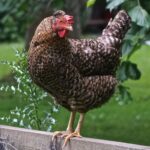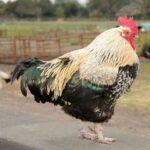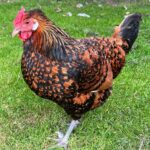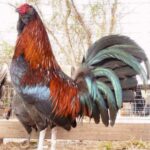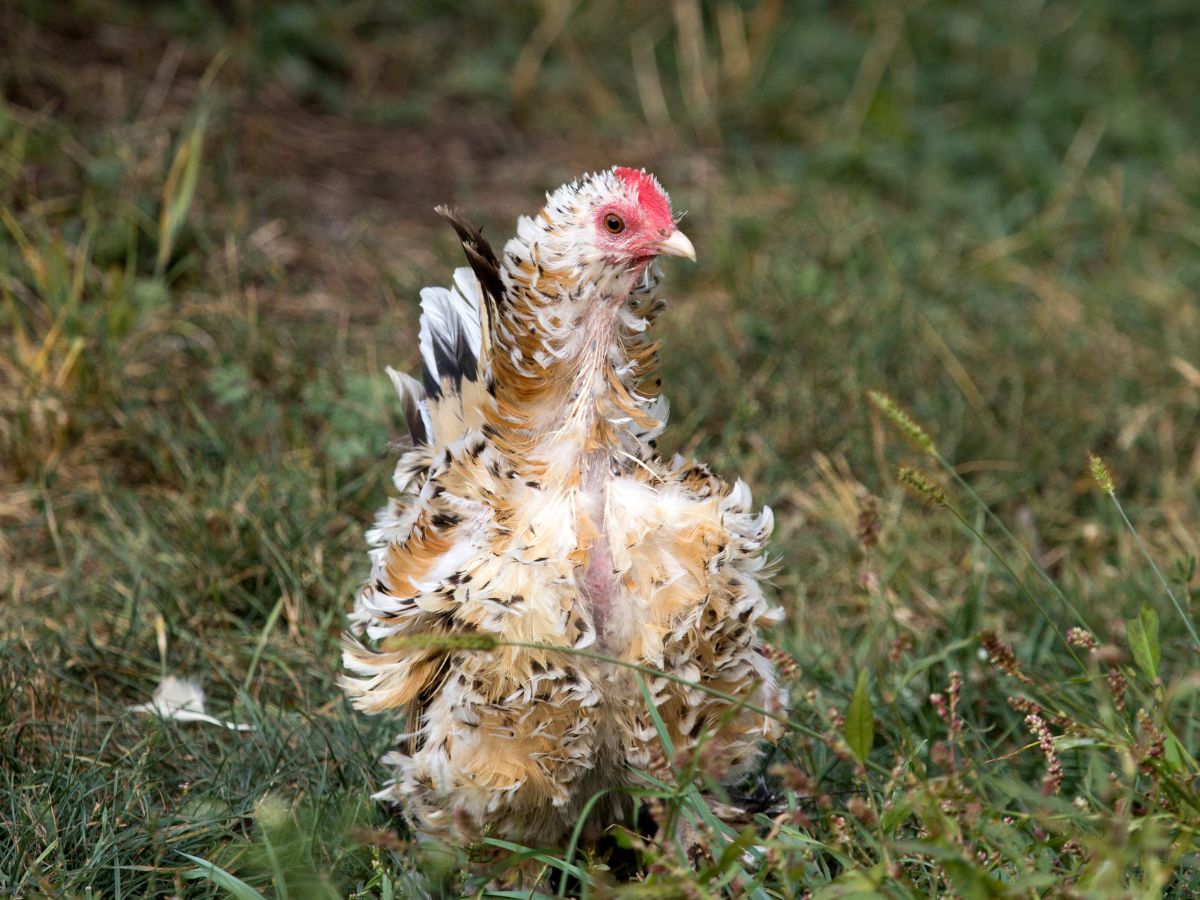
This post may contain affiliate links. Please read my disclosure for more info.
Chickens molt for the first time when they’re around 18 months old, and every year thereafter.
This means they are shedding their old feathers, and growing a new set in time for the winter ahead.
Feathers are made up of approximately 80%-85% protein. So, providing high protein foods for molting chickens will ensure they’re getting the nutrition they need during the 8-12 weeks while they’re molting.
Here’s everything you need to know about molting and how you can help your chickens by supplementing their diet with some extra protein while they’re molting.
Jump to:
Why Do Chickens Molt?
If you were not expecting it and you suddenly notice your chickens are losing their feathers, it can be quite a shock.
It’s completely normal though, so don’t panic. And, it’s going to happen every year.
The molting process is triggered by the shorter days and cooler temperatures that start creeping in after the summer.
This is the perfect time for chickens to shed their old, dull, and damaged feathers. Meanwhile, they grow a new coat of plush, thick feathers ready to keep themselves well insulated by time winter comes.
Who can blame them, right? We all get our winter coats out of the wardrobe when it’s wintertime (at least I do), so it makes perfect sense.
How Much Protein Do Chickens Need in Their Diet?
Just like us and many other animals, chickens have different dietary requirements depending on what stage of life they’re going through.
Chickens require a range of minerals and vitamins from their feed, as well as some important nutrients like protein and calcium that play important roles in their development and egg production.
Here’s a guide showing you how much % protein chickens require from their feed depending on their age and stage of development:
| Stage/Age | % of Protein in Feed |
|---|---|
| Baby chicks up to 6 weeks old | 20%-22% |
| 7 weeks up to point of lay | 14%-16% |
| Laying hens | 16%-18% |
| General all-purpose chickens | 16% |
| Molting chickens | 18%-20% |
What Foods Are High in Protein for Chickens?
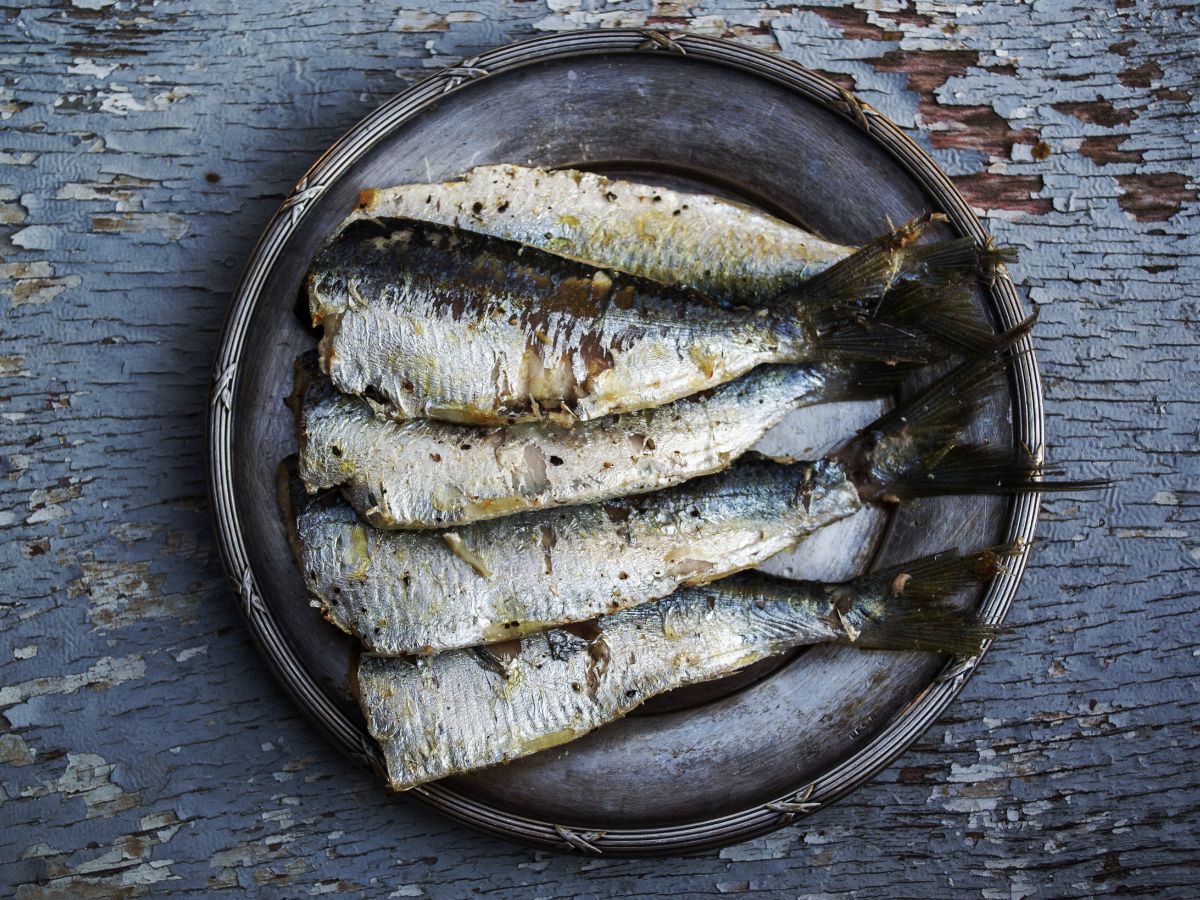
Most commercial feeds are around 16% protein. If your chickens are molting, you can either switch them onto a feed closer to 20%, or you can supplement their diet with high protein foods.
Some high protein foods that - in my experience - all chickens love, include:
Mealworms
Chickens love mealworms. Not only that, but mealworms give them something to scratch for and they’re packed with protein.
Here is a big old bag of mealworms on Amazon. This is the best brand I’m able to find, the worms are non-GMO, have no preservatives, additives, or any of the other bad stuff you wouldn’t want your flock eating.

You can check the latest price and read customer reviews over on Amazon by clicking here.
Related content - It’s illegal to feed your chickens mealworm in the UK!
Scrambled Eggs
You can feed chickens eggs and eggshells for added calcium. It’s not as strange as it may sound.
You do have to cook them though, you can’t give chickens raw eggs. The quickest and easiest way is to scramble them.
Do remember that you’re not serving up a meal to liven up the taste buds, you’re providing your chickens a protein boost. Don’t add any seasoning, just scramble and cook the eggs.
Tuna and Sardines
Fish is another excellent source of protein that chickens love gobbling up. You can’t go wrong with tuna, it’s packed with good nutrition, is affordable, and they love it.
I’ve also given mine sardines on occasion, which they loved! You can probably give them just about any fish, just make sure it's been preserved in water and doesn’t have any additives or flavorings.
Best High Protein Chicken Feeds
Purina Premium - Flock Raiser Crumbles

This is the feed Purina recommends for molting chickens. It contains 20% protein, along with probiotics, prebiotics, and key vitamins and minerals that are molting chickens need to grow strong feathers.
You can check the latest price and read customer reviews over on Amazon by clicking here.
Scratch and Peck Feeds 18% Organic Feed

This feed from Scratch and Peck delivers 18% protein. It’s a high-quality organic feed containing grains, flaxseed, fish meal, and the essential vitamins and minerals your chickens need.
You can check the latest price and read customer reviews over on Amazon by clicking here.
What to Do When Your Chickens Are Molting?
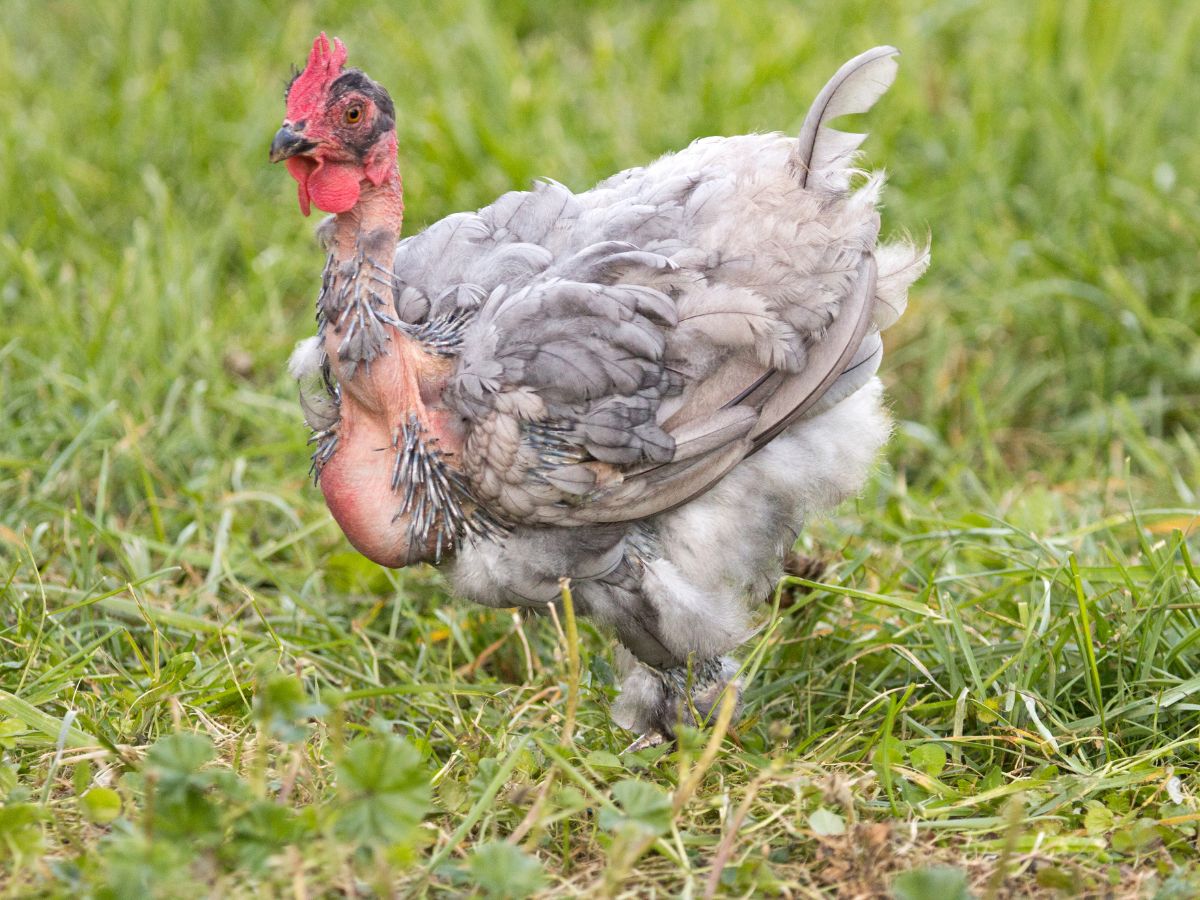
As I’ve discussed, your chickens are going to need more protein in their diets. There are some other things you can do too to help them while their molting;
Keep Stress to a Minimum
Molting is a stressful time for most chickens, and a lot will stop laying eggs while they’re in this period.
If you can do anything to improve their living conditions, such as giving them a little more room, handling them less, making sure roosters aren’t harassing them, and so on, do what you can.
Give Them a Little Apple Cider Vinegar
I covered some of the benefits of apple cider vinegar and how to give it to your chickens in this post.
I love giving my flock a little ACV when they are stressed due to being moved, need some help digesting, or I feel like their immune systems need a boost.
Move Back to Layer Feed When They've Finished Molting
Feeding your flock a high protein diet is not good for them in the long-term. Make sure you gradually transaction back to their regular layer feed as they finish molting.
Most birds take around 8 weeks to regrow their feathers. It can take longer, it depends on the breed of the chicken and the level of care they’re getting.
Feeding them the appropriate diet and taking note of the other things I’ve covered in this article will ensure they’re showing off their new coat of feathers in the quickest possible time.
In Summary
Now you know what molting is, what it means for your chickens, and how to help them through this (potentially) stressful time by providing a stress-free environment and the right nutrition.
Take it from me, giving molting chickens the right nutrition makes a huge difference to their wellbeing during the 8-12 weeks they’re shedding their feathers.
And it’s super easy to do, so there are no excuses!


